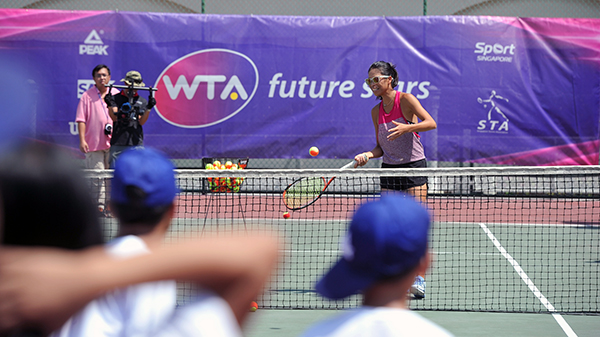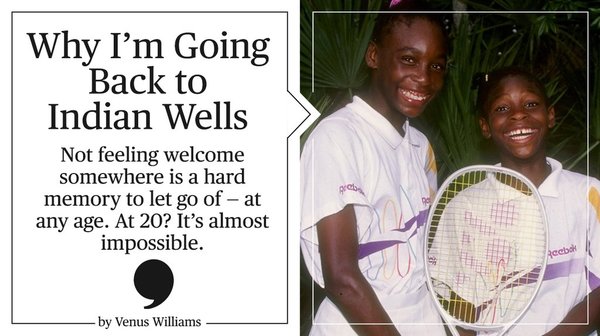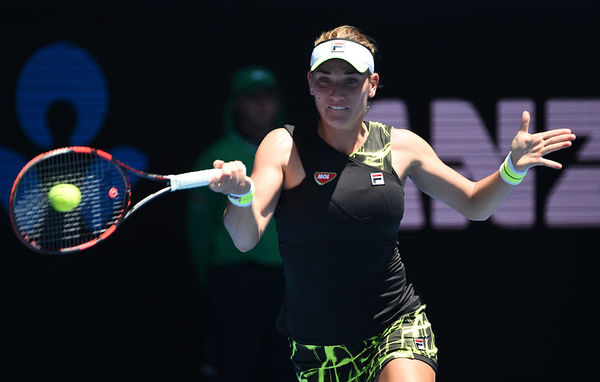The opening service games of the season have been full of surprises, but with her booming delivery, World No.45 Timea Babos has been holding comfortably thus far in 2016.
“It’s my strongest shot,” she told WTA Insider before her first round match at the Abierto Monterrey Afirme. “I like to play aggressive tennis, and it helps to be aggressive with a good serve.”
Babos has hit a tour-leading 76 aces through 12 matches, a stat that has helped her halve her ranking in a matter of weeks – shattering a former career-high of No.59 – and earn big wins over the likes of Sara Errani and Eugenie Bouchard.
“So far, it’s all working really well because I’m improving and enjoying my tennis a lot. I’m so motivated, and it’s all just getting better and better.”
The former junior prodigy has always excelled in doubles, winning three girl’s doubles majors with Sloane Stephens and finishing one match shy of Wimbledon glory in 2014 with Kristina Mladenovic. A strong season with the Frenchwoman – one that included a rare win over Martina Hingis and Sania Mirza – booked the heavy-hitting Hungarian her debut appearance at the BNP Paribas WTA Finals Singapore presented by SC Global last fall.
“The atmosphere was unbelievable; all of the luxuries and spectacle there are definitely worth working towards. I was really excited, proud and honored to be there, and I think it was a good experience.
“I’m still learning a lot, day by day at my age. I’m only 22, so it’s been a good process and I’m ‘processing’ in every way. It can be motivating – although I think I’m already pretty motivated,” she added with a laugh. “But it can just motivate me that much more, that it’s really worth the work every day knowing that, if you work hard, you can reach the highest levels.”

Babos’ brush with the big stage in Singapore left her with renewed determination to restore the balance between her disparate singles and doubles rankings, opting to further extend her season by playing pair of WTA 125K Series Tournaments in Asia – winning one in Taipei.
“Last year we had big goals in doubles. Obviously, I also had goals with singles, but Singapore was one of the main focuses. During the year, I couldn’t play all the singles tournaments I would have wanted because of doubles, and it wasn’t easy to make a good schedule with my singles ranking and with my doubles ranking combined.
“After Singapore, I thought it would be good to finish the year strong and try to make it easier to schedule tournaments from the beginning of the year. Thankfully everything went well, and it’s true: it’s a lot easier to make a schedule when you have a better ranking in both!”
She took that momentum into a productive (albeit unusually truncated) off-season with longtime coach Thomas Drouet – who led Marion Bartoli through a victorious Wimbledon fortnight in 2013 – and rang in the New Year with a run to the semifinals of the Shenzhen Open.
“We had our two-year ‘anniversary’ – if you could call it that – on the 19th of February, and it’s going really, really well. I enjoy working with him and I’ve learned a lot; he’s worked with top players before and has had many good results. He’s helped me a lot to improve every day, and we enjoy our job together.
“We like to step on court every day, even if it’s seven in the morning or 10 at night. Whenever we’re on court, we just try our best to improve.”
The improvements have been particularly evident on serve, which has evolved from a strength to a true weapon, the cornerstone of an all-out offensive strategy.

“We changed my technique a little bit, and it’s working out well. I’m more consistent with my first serve percentage, and more accurate with my spots. This is my strength, and my most confident shot. If I really trust in it, I can build my game around it, so I think it can give me a good base.”
Holding serve nearly 80% of the time, Babos draws inspiration from World No.1 Serena Williams as she grows more adept at using the shot to stand up to high-pressure situations – saving 65% of all break points faced this season.
“If you look at Serena, she might not always at her best from the baseline, but her serve is so unbelievable that it can cause trouble for everyone, and it also takes her out trouble. It can be an important shot.”
Hers has been key to this vein of consistency, as the big server comes to Monterrey with back-to-back wins at all but one of her tournaments in 2016 – the Australian Open, where she reached the second round for the first time in her career.
“I wasn’t consistent enough, and this is what was missing from my game last year. Since October, I’ve moved up about 40 spots in the rankings, which is definitely a big improvement. I’ve had consistent results so far this year – nothing huge, but still more consistent as I continue to work a lot on both the physical and mental aspects of my game.”
This week in Monterrey represents a return to where it all began for Babos, who burst through a window of opportunity to capture her first title in back in 2012, upsetting former No.1 Ana Ivanovic en route to the quarterfinals 12 months later as the defending champion.

“I was last in because Serena pulled out at the last minute. The day before I didn’t even know I’d be competing, and then all of the sudden I was in the main draw, going on to win the singles. The year after I won again, in doubles.
“Every year I have good fun here, and I have good memories. I just like the place; there is a little bit of altitude, which I really, really like. I also love the food, especially guacamole! This is one thing that makes me happy every day that I can have it.
“It all comes together, and so I’m really happy to come back and play here because of the good memories I have.”
Memories of her time atop the junior rankings – where she peaked at No.2 back in 2010 – also propel her forward as she and her former rivals continue to make strides on the WTA circuit.
“Our age group is actually one of the strongest of the past couple of years. We have so many good players born in ’93 and ’94. I won Grand Slams with Sloane, and played a lot with Kiki. I also played so many matches against Genie and the Pliskova sisters.
“I think it’s very good to always have these girls around. It gives a little bit of motivation to see that, if one of us can do well, then why not the other?”
Success is still very much an abstract concept for Babos, even as she finds herself quickly catching up to the rest of her cohort. But a positive mindset might be all she needs to start serving notice on the game’s biggest stages.
“My goal is to stay humble, to work hard and try my best every time I step on court, and to have fun. I really believe that if all that happens, I can have my good results and everything will happen how it should.
“I’m going to try the best I can and then we’ll see what happens.”
All photos courtesy of Getty Images.













